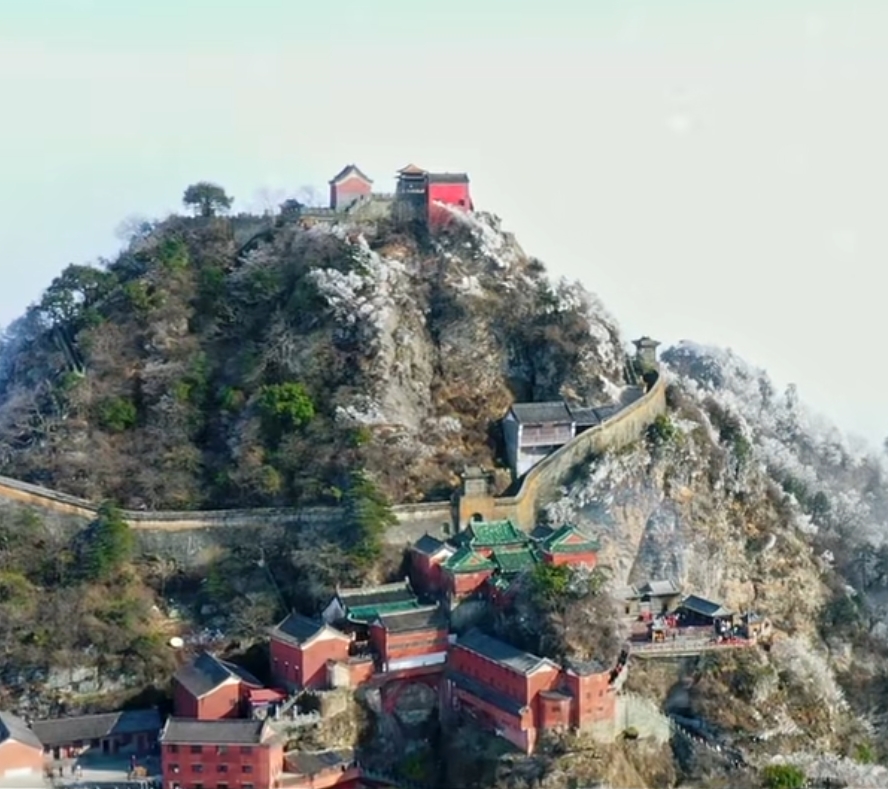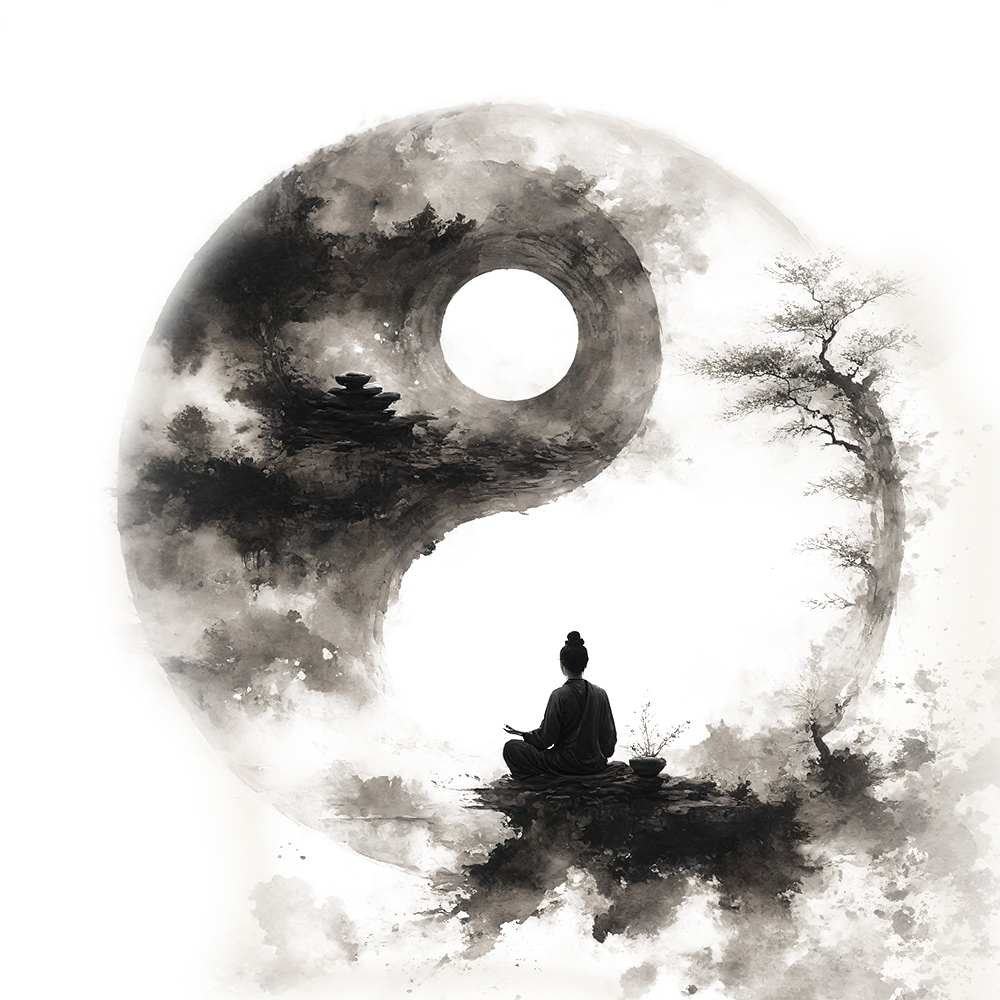
The Wudang Sect is one of the martial – arts sects in mainland China. In literary works, Wudang martial arts were once depicted as extremely miraculous, and the boxing techniques that mainly focus on internal – power cultivation are commonly known as internal – martial – arts. The Wudang martial arts created by Wudang Taoists contain the traditional philosophy of cherishing life. Novelists incorporated philosophical theories such as Tai Chi, Yin – Yang, Five Elements, and Eight Trigrams into the principles of boxing, boxing techniques, training principles, and combat tactics, forming a vast Wudang martial – arts system.
The Legendary Founder in the Wudang Sect
The legendary founding patriarch of the Wudang Sect is Zhang Sanfeng, who lived around the Yuan and Ming dynasties. There are various accounts of his life. Generally speaking, he was from Yizhou in Liaodong. His real name was Zhang Quanyi, also known as Zhang Junbao, with the courtesy name Sanfeng. Because he was unkempt, he was also called Zhang Lanta. He was intelligent and had an excellent memory. In his conversations with others, he focused on morality, benevolence, righteousness, loyalty, and filial piety, and never deceived people with falsehoods. As a result, he cultivated himself to a state where “his heart and spirit were in harmony, his spirit and the Tao were united, and he had foresight in everything.” He was unpredictable in his daily life, sometimes walking through mountains as if they were flat ground and sleeping on snow as if it were a bed, so people regarded him as an immortal.
The Status of the Wudang Sect in Martial – Arts Novels
In martial – arts novels, both the Wudang Sect and the Shaolin Sect hold extremely important positions. There has always been a saying of “respecting Shaolin in the north and Wudang in the south.” The two sects often joined forces to uphold justice in the martial – arts world. Besides the difference in religious beliefs (Buddhism for Shaolin and Taoism for Wudang), the location of Shaolin Temple is relatively clear, while the Wudang Sect is only said to be on Wudang Mountain. This may be because although there are many well – known Taoist temples on Wudang Mountain, there is no institution like Shaolin Temple that combines religion and martial arts.
The Wudang Sect in Jin Yong’s Novels
According to Jin Yong’s The Heaven Sword and Dragon Saber, Zhang Sanfeng was a disciple of Monk Jueyuan of Shaolin. Because they violated the Shaolin rule that forbade learning martial arts while doing chores, they fled. Later, he adapted the Shaolin techniques and created internal – martial – arts on his own, founding the Wudang Sect. As the origin of internal – martial – arts, the Wudang Sect is as famous as Shaolin in the martial – arts world.
The Signature Skills of the Wudang Sect
Beginner – Level Skills
- Thirty – two – Posture Long Fist
- Wudang Long Fist
- Eight – Trigram Dragon – Walking Palm
Weapons
- Shenmen Thirteen Swords: There are thirteen different moves, and each move targets the Shenmen point on the enemy’s wrist. The Shenmen point is located at the end of the bone at the back of the palm. Once the enemy is stabbed by the sword, their palm will lose all strength.
- Rouzhi Rou Sword: When using this sword technique, the swordsman uses powerful internal force to bend the sword blade, making the long sword seem like a soft belt. It is light, flexible, and unpredictable, and its sword moves are changeable, making it difficult for the enemy to defend.
- Rouyun Swordplay: Once this sword technique is launched, it is continuous. No matter how the opponent defends or retreats after the first move, the second move will follow smoothly, like an endless soft silk or continuous spring clouds.
Fist and Palm Techniques
- Mianzhang (Soft – Palm Technique): This technique mainly uses the palm. The movements are as soft and smooth as silk, continuous, and the palm movements form a circle. The internal force requires a combination of internal firmness and external softness, and when exploding, it is fast and quick.
- Bagua Zhang: It conforms to the number of the Eight Trigrams. When performing this palm technique, the practitioner is required to use the Bagua step (a kind of walking step) to walk in a circle, covering all eight directions, unlike general boxing techniques that either move in a straight line or in four directions. Therefore, it is called “Bagua Zhang.”
- Hui Feng Zhang (Back – Wind Palm)
- Hu Zhua Shou (Tiger Claw Hand)
- Zhen Shan Zhang (Shock – Mountain Palm): With internal force running through both arms, the practitioner lets out a loud shout and pushes out both palms.
- Zhen Tian Tie Zhang (Shock – Heaven Iron Palm)
- Hu Zhua Juehu Shou (Tiger Claw Decisive – Hand Technique): Evolved from the Hu Zhua Shou (Tiger Claw Hand) of the Wudang Sect’s grappling techniques, this move targets the enemy’s waist. It can cause great harm to the enemy.
- Wuji Xuan Gong Quan (Wuji Mysterious – Power Fist)
- Light – Body Skills ◦ Ti Yun Zong (Cloud – Ladder Leaping): Regarded as the best among light – body skills, it emphasizes the agility of the body rather than using complex footwork to confuse the opponent. The key is to have a light body and be able to move freely up and down.
- Formations ◦ Zhenwu Qi Jie Zhen (True – Wu Seven – Section Formation): Zhang Sanfeng was inspired by the Snake Mountain and Turtle Mountain in front of the statue of the True – Wu God. He thought that the snake and the turtle combined the heaviest and most spiritual properties. Thus, he created a set of extremely wonderful martial arts. However, the martial arts derived from the majestic momentum of the Snake and Turtle Mountains could not be performed by one person alone. So he passed on a set of martial arts to seven disciples, each with its own subtleties. If two people cooperate, they can attack and defend comprehensively, and the power is greatly enhanced. If three people use it together, the power is twice as strong as when two people use it. Four people are equivalent to eight first – class masters, five people are equivalent to sixteen, six people are equivalent to thirty – two, and seven people are equivalent to sixty – four first – class masters of the present world fighting at the same time.
- Internal – Power Skills ◦ Chunyang Wuji Gong (Pure – Yang Wuji Power) ◦ Wudang Jiu Yang Gong (Wudang Nine – Yang Power)
- Secret Skills ◦ Yitian Tu Long Gong (The Mysterious Penmanship Inspired by The Heaven Sword and Dragon Saber): Created by Zhang Sanfeng based on the twenty – four characters of “The Heaven Sword and Dragon Saber.” Only Zhang Cuishan among the Seven Heroes learned it. ◦ Tai Chi Swordplay: A sword technique that integrates the essence of Taoist martial arts. It emphasizes that the spirit should be in front of the sword, continuous, and use stillness to respond to changes. ◦ Tai Chi Quanfa: A boxing technique that integrates the essence of Taoist martial arts. It emphasizes the continuous rotation of Tai Chi and uses intention rather than force.
(Note: The above content is mainly referenced from The Illustration of Tai Chi Quan Postures written by Xu Yusheng, who was a master of Yang – style Tai Chi Quan and published the book in 1921.) Zhang Sanfeng used the “Zhenwu Sword” (Swordsman) when he was young.
Characters in the Wudang Sect
The Heaven Sword and Dragon Saber
- Founding Sect Leader: Zhang Sanfeng
- Sect – Leading Disciples: Song Yuanchao, Yu Lianzhou, Yu Daiyan, Zhang Songxi (“Silver Hook and Iron Stroke”), Zhang Cuishan, Yin Liting, Mo Shenggu ◦ “Jade – Faced Mengchang”: Song Qingshu ◦ Lingxuzi: ◦ Zhang Wuji
The Smiling, Proud Wanderer
- Chongxu Daoist
The Deer and the Cauldron
- Yunhe Daoist
- Yunyan Daoist
The Book and the Sword
- “The Lone Ranger” Ma Zhen
- “The Soft – Needle in Cotton” Lu Feiqing
- “The Fire – Handed Judge” Zhang Zhaozhong
- “The Golden Flute Scholar” Yu Yutong
- Li Yuanzhi
The Poem of Martial – Arts Madness
- Wudang Sect Leader: Yao Lianzhou
Branches
- Xian Du Sect (The Blade of the Red – Blood Sword)
